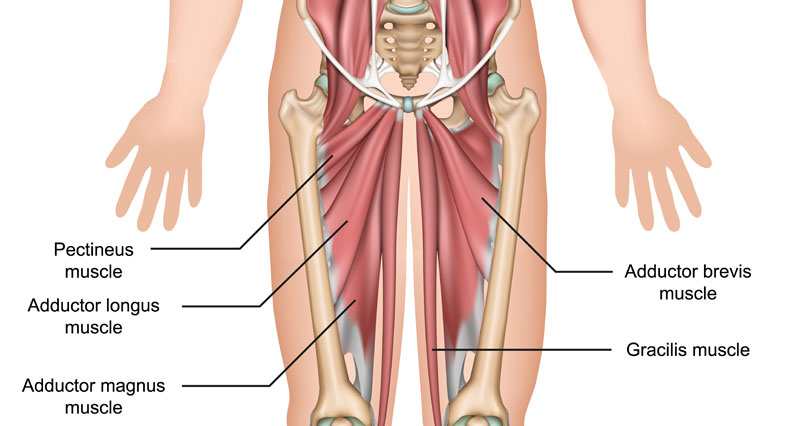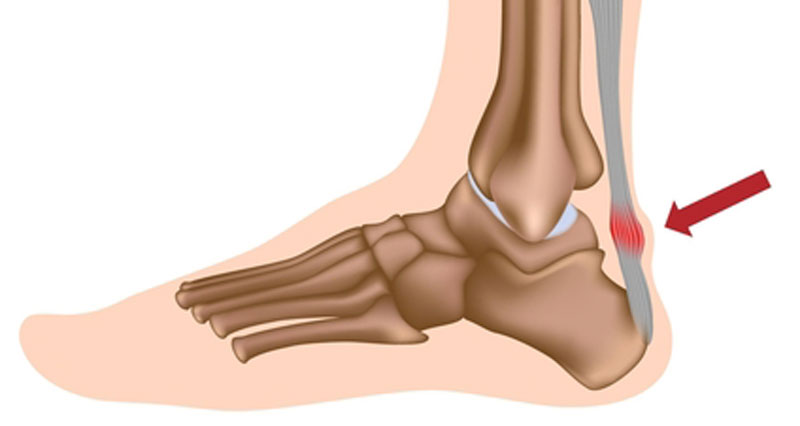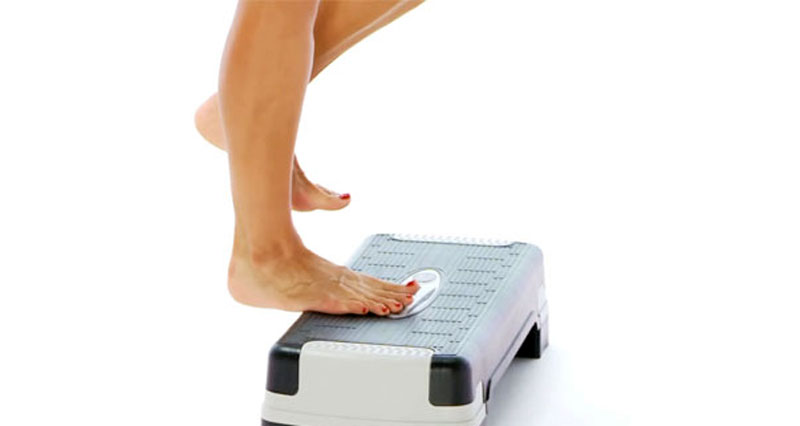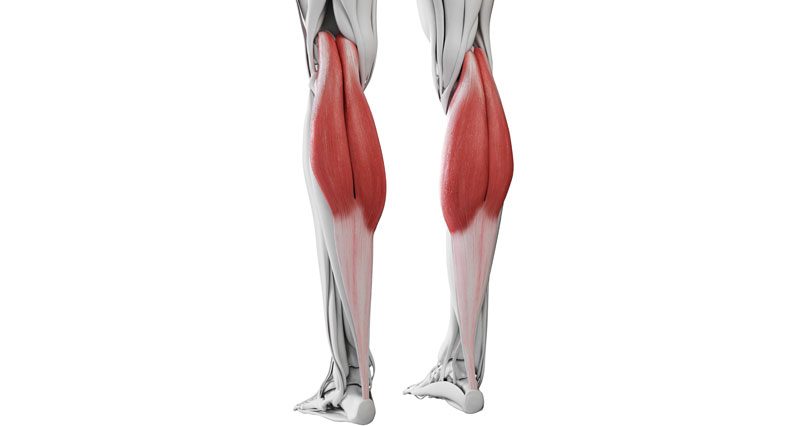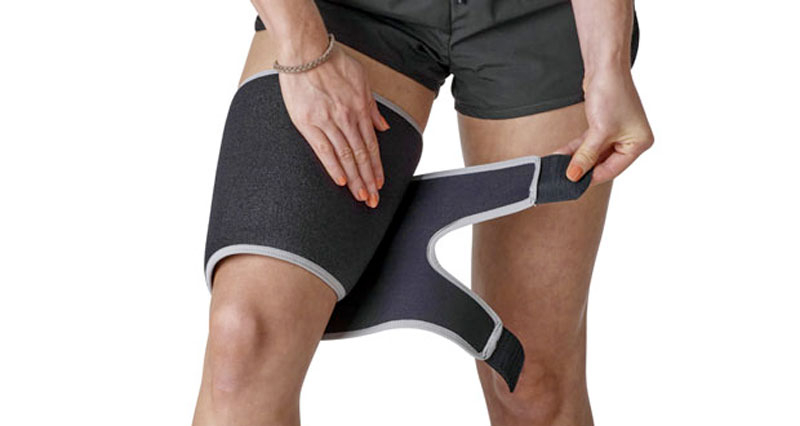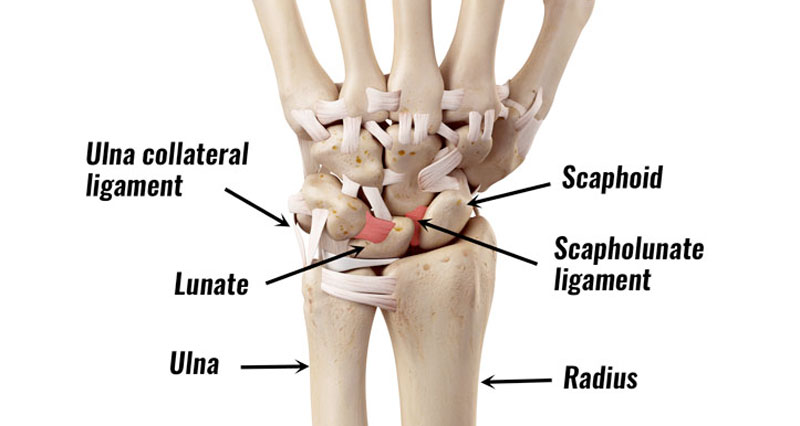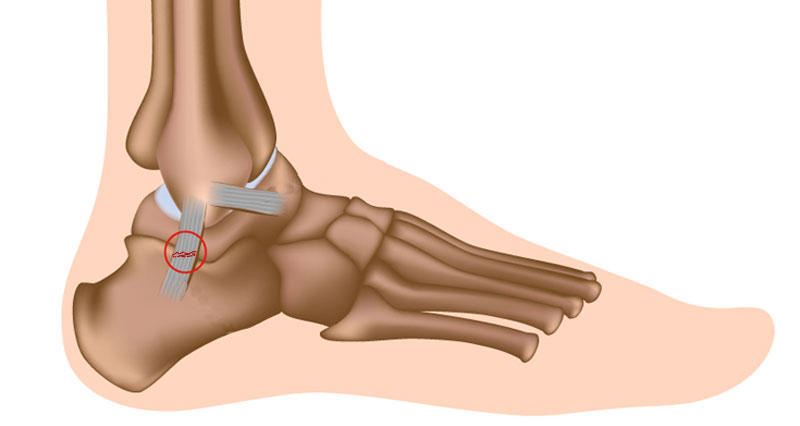Here we explain the major muscles of the human body. If you know where muscles attach and how they contract then you can know how to exercise those muscles and diagnose injuries.
Foot and ankle muscles
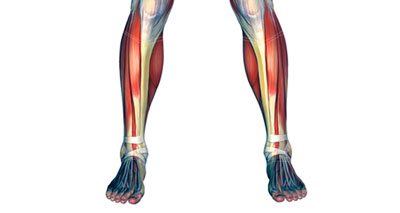
The major muscles of the foot and ankle are:
- Gastrocnemius
- Soleus
- Peroneus brevis
- Peroneus longus
- Tibialis posterior
- Tibialis anterior
- Flexor hallucis longus
- Flexor digitorum longus
- Extensor hallucis longus
- Extensor digitorum longus.
The movements generated at the foot and lower leg are plantar flexion (foot points down), dorsi flexion (foot points up), eversion (foot rolls in) and inversion (foot rolls out like an ankle sprain).
- More on foot & ankle muscles
Knee joint muscles
The 4 muscles at the front of the thigh known as the Quadriceps are:
- Rectus femoris
- Vastus medialis
- Vastus intermedius
- Vastus lateralis
The 3 muscles at the back known as the Hamstrings are:
- Biceps femoris
- Semitendinosus
- Semimenbranosus
In addition these muscles also help move the knee joint:
- Gastrocnemius
- Popliteus
- Sartorius
- Gracilis
Movements available at the knee joint are knee flexion (bending), knee extension (straightening) and a small amount of rotation.
- Read more on knee joint muscles
Hip, groin and pelvic muscles
The hip and pelvic muscles include:
- Rectus femoris
- Iliopsoas (hip flexors)
- Adductor longus
- Adductor magnus
- Gracilis
- Adductor brevis
- Gluteus maximus
- Gluteus medius
- Biceps femoris
These muscles enable flexion (thigh forwards and upwards), hip extension (thigh downwards and backwards), abduction (out to the side), adduction (inwards) and rotation.
- More on hip and pelvic muscles
Trunk and spine muscles
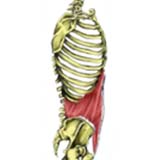
The spine consists of 24 vertibrae, 7 cervical (neck), 12 thoracic (chest), 5 lumbar (lower back), 5 fused bones of the sacrum and 4 fused bones in the coccyx or tailbone. The main muscles involved in moving the spine and neck:
- Rectus abdominus
- Internal and external obliques
- Quadratus lumborum
- Multifidus
- Sternocleidomastoid
- Errector spinae
- More on spine muscles
Shoulder joint muscles
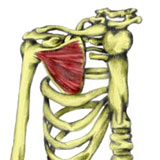
The muscles of the shoulder joint are:
- Subscapularis
- Infraspinatus
- Teres minor
- Teres major
- Latissimus dorsi
- Pectoralis major
- Deltoid.
Together these are known as the rotator cuff muscles. They work closely with the shoulder girdle muscles to stabilize and move the shoulder.
- More on shoulder joint muscles
Elbow joint muscles
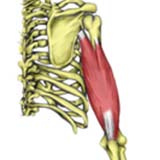
The muscles at the elbow joint include:
- Triceps brachii
- Biceps brachii
- Brachialis
- Brachioradialis
- Pronator teres
- Anconeus
- Supinator
- Pronator quadratus.
Many of the elbow joint muscles also cross the wrist joint as well. Movements at the elbow joint are flexion and extension, with pronation and supination of the forearm.
- More on elbow joint muscles
Wrist and hand joint muscles
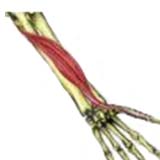
Wrist and hand muscles include:
- Extensor carpi radialis brevis
- Extensor carpi radialis longus
- Extensor carpi ulnaris
- Extensor digitorum
- Extensor pollicis longus
- Felxor carpi radialis
- Flexor carpi ulnaris
- Flexor digitorum superficialis
- Flexor pollicis longus
- More on wrist and hand muscles
Shoulder girdle muscles
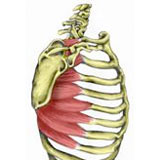
Shoulder girdle consists of the clavicle (collar bone) and the scapula (shoulder blade) which generally move together as a unit. The muscles of the shoulder girdle are:
- Serratus anterior
- Pectoralis minor
- Levator scapulae
- Rhomboids
- Trapezius
Only the clavicle connects directly to the rest of the skeleton at the sternum bone. It is really only the scapula which moves from action of the muscles.
- More on shoulder girdle muscles
Structure of skeletal muscle
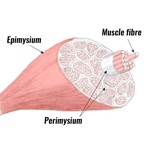
Skeletal muscle is made up of a number of different parts. Muscles are made up of bundles of muscle fibres called fasciculi. Each muscle fibre is made up of a number of myofibrils. Each myofibril is made up of proteins called actin and myosin.
- Read more on the structure of skeletal muscle.
How muscles contract
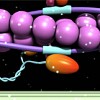
Muscles contract in different ways depending on the type of movement at the joint. For example, a concentric muscle contraction is when the muscle being contracted shortens. An eccentric muscle contraction is when the muscle lengthens whilst contracting. Sliding filament theory describes at a molecular level how muscles contract.
- Read more on muscle contraction.
